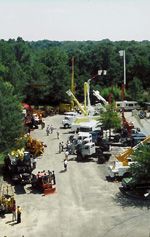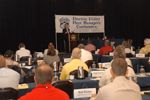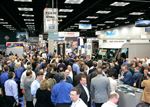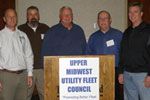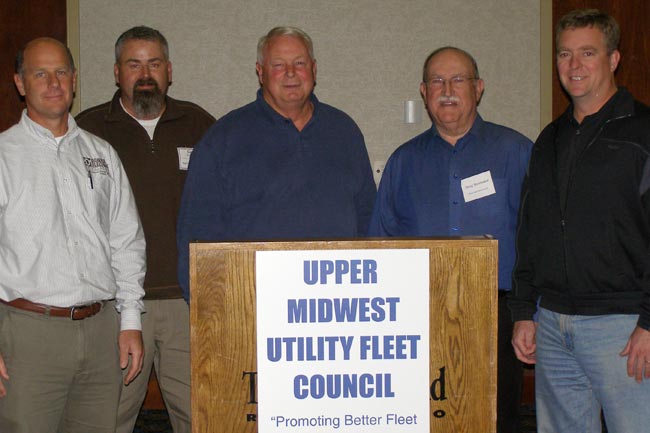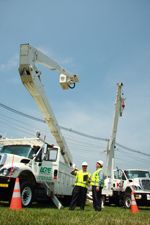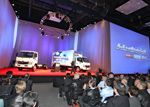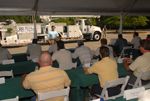This is a review of ANSI/SAIA A92.2-2015, “American National Standard for Vehicle-Mounted Elevating and Rotating Aerial Devices.” As a consultant, investigator and auditor, I have been surprised time and again that people who should know this standard do not know it that well. Most fleet managers are familiar with the rules, which is important because the A92.2 standard obligates owners of aerial lifts to be held liable for equipment they sell in certain scenarios. On the employee side, a working knowledge of A92.2 can prevent incidents and loss of life. In fact, a recent live-line barehand training class was what inspired this topic. We found that a bucket truck had the leasing company’s logo sticker adhered down both sides of the insulated boom section. That bucket truck was designed and rated for barehand use at 500 kV, yet a vinyl-plastic printed logo installed by the leasing company, spanning two-thirds of the insulated length, could have had some serious implications for the safety of that boom.
In this article, we are going to review some of the information covered in the A92.2 standard. Readers should recognize that ANSI/SAIA consensus standards are protected by copyright, so we will not directly reproduce the text of the standard itself. The A92.2 standard can be purchased directly from the ANSI website (https://webstore.ansi.org).
The target audiences of this review are the owners and users of aerial lifts (bucket trucks) as well as safety departments, with the goal of familiarizing those parties with both the safety aspects and owner responsibilities regarding aerial lifts. Unlike many consensus standards, A92.2 has been incorporated by reference into the OSHA standard, meaning that certain parts of the A92.2 standard are enforceable by compliance officers. In addition, the incorporated parts of the standard essentially are “living” – they have been published in the Federal Register and made available to the public so that updates to the A92.2 standard are automatically part of the legally enforceable federal OSHA standard. Now that we have the applicability of the standard covered, let’s take a look at what the standard requires.
A92.2 Requirements
The various sections of A92.2 are specific to different groups and their relationship with an aerial device. The manufacturer is the principal audience for Sections 4 and 6. Section 7 is for dealers and the installer who puts the aerial device on the vehicle. The owner is primarily responsible for Section 8, which covers inspection and maintenance plus training of operators. Owners also are responsible for having a unit inspected and repaired if it is overloaded, turned over or makes an electrical contact (see 8.2.5). User responsibilities are addressed in Section 9 and include ensuring that only trained personnel are allowed to operate the aerial device; the section also states what those trained personnel are required to know. Owners and users share the Section 9 and 10 responsibilities.
Paragraph 1.1.1 of the A92.2 standard defines the equipment covered. Those covered devices are vehicle-mounted aerial devices, including extendable (telescoping) and articulating boom platforms, and ladders and towers mounted on trucks, trailers and all-terrain vehicles.
Paragraph 1.2 sets out the purpose of the standard, which is to prevent accidents and injuries by standardizing ratings for the aerial lifts covered, and to assure an understanding of the responsibilities of manufacturers, dealers, brokers, installers, lessees, lessors, maintenance personnel, operators, owners and users.
While the design and manufacturing standards covered by A92.2 affect those units newly manufactured after the June 2016 effective date, all other provisions of A92.2 apply to both new and existing units delivered by sale, lease, rental or by any other form of beneficial use on or after the effective date.
Part 2 of the standard covers references related to design; Part 3 covers definitions particular to the standard; and Part 4 is about controls. Operators of aerial devices are familiar with many control schemes of various manufacturers, but there are a few rules that need particular attention as I have seen some of these controls “tricked out” by operators.
Paragraph 4.3.1 requires controls to be clearly identified and protected from damage and unintentional operation. That means when trees or an operational error knocks off the enclosure surrounding the controls, the bucket is out of service. It’s the same for the control labels. If you can’t read them, the boom doesn’t fly, no matter how familiar you are with the controls. The labels are readily available, so there isn’t any reason they can’t be replaced well before they are no longer legible. Every aerial device must have controls at the bottom of the boom that are labeled and protected from inadvertent operation or damage.
Paragraph 4.3.1.2 requires controls to have an enabling or unlocking action designed to prevent inadvertent movement of booms by bumping controls. This is where some users have tricked out controls by taping down levers or actuators. As with any safety mechanism, defeating it is against the rules, but those levers and actuators get taped down more than you might think.
Paragraphs 4.4.2, “Boom Securing,” and 4.4.3, “Platform Security,” are related to each other and critical. Transport creates impact stresses on buckets that result in mount failures and loss of buckets, usually when they’re in the air with people inside them. Securing the boom not only protects weldment-to-fiberglass fatigue at the elbow, but it also keeps the boom from slamming down the bucket during rough road travel. All of us have seen buckets stowed with no landing support, but it is now a requirement to provide support, and for good reason: stabilizing the bucket and protecting it from stress that can shear the bucket from the boom mount. If your crews tend to leave hoists and tools in the bucket during transport, these two features – boom straps and bucket support – will help to relieve the stress that bouncing tools contribute to bucket mount damage.
Anchorage/fall protection requirements are found in paragraph 4.9.4. Attachments are to be designated by the manufacturer and rated at 3,600 pounds per person. An important inclusion here is that the attachment itself is to be rated but not necessarily the boom or bucket it is attached to. As the rule states in a note to paragraph 4.9.4.3, “Strength Requirement,” this does not imply that the aerial device is meant to meet or comply with this load requirement. It is imperative that employers look closely at the fall protection they provide and ensure it is the best choice for bucket use.
Bucket Design and Application
The A92.2 standard is the final word on design and application of buckets and booms used in line work. There are three types of buckets: non-insulating for use with insulating liners; non-insulating for use without insulating liners; and insulating buckets.
Paragraph 4.9.5.1, non-insulating with liner: This bucket is made from non-conductive materials with a tested, insulated liner installed. The basket must be identified as non-insulating. The liner must be supported by the bottom of the bucket, and the bucket cannot have drain holes or an access opening.
Paragraph 4.9.5.2, non-insulating, not designed for use with liners: This bucket may be constructed of conductive or non-conductive material, must be identified as non-insulating, and may have drain holes and access openings.
Paragraph 4.9.5.3, insulating buckets: These buckets are constructed from non-conductive material and have no drain holes or access openings.
5.1.2: Insulating Aerial Device Categories
There are five categories of insulating aerial devices. Each category has special design characteristics to accommodate the design use. They are not all created equal, and how a device is used in the field must match its design category.
Category A: This is a bucket designed for barehand use. In Category A buckets, the boom – not the bucket – is the primary means of protection for the worker. These buckets must have all of the conductive components bonded together at the boom’s working (hot) end. Category A buckets have an electrical testing system installed at the lower end of the insulating upper boom. For Category A booms designed for work above 138 kV, a corona ring is required to be installed at the upper end of the boom and bonded to the conductive components. Category A booms may be used as gloving platforms if they meet the cover requirements of paragraph 4.1 of the A92.2 standard. The cover specified in 4.1 is an insulating cover over the lower metal boom tip that is exposed to conductor contact to prevent the upper end of the conductive boom from contacting energized conductors.
Category B: This bucket is commonly referred to as a gloving bucket, but the criteria for Category B is related to the boom, not gloving use. Category B buckets have an insulating boom equipped with a test electrode system at the lower end. The boom itself is considered a secondary level of protection for the worker. Here, the primary means of protection is use of insulating tools, which can be hot sticks and rated insulating cover. A Category B bucket can be designed and used for gloving if it meets an additional requirement of paragraph 4.1: an insulating cover over the lower metal boom tip that is exposed to conductor contact. Category B insulating buckets and insulating booms are not designed for direct uninsulated contact with energized conductors even though they are tested for insulating value.
Category C: Like Category B, the designation for Category C is the design of the boom – not use. Category C is a boom with a lower test electrode, and the boom and basket are designed as secondary protection, whereas insulated tools are primary protection for the worker. Category C is limited to work on electrical systems below 46 kV. For Category C booms to be used for gloving (below 18kV), the lower metal boom tip must be covered with insulating cover.
Category D: Category D booms are insulating but do not have test electrode systems installed, and no metal boom-tip covers are required for use as a gloving platform. These booms are a secondary means of protection, whereas the primary means of protection is use of insulating tools – better known as “sticking” – not distribution gloving work methods. Work from this platform is on systems less than 46 kV.
Category E: Category E aerial booms are designed for low-voltage applications. The primary means of protection are insulating guards or isolation. Category E booms are nameplate-rated at voltages of 20 kV, 5 kV, and 1 kV and below.
5.2.2: Hydraulic Vacuum Prevention
Hydraulic vacuum is a phenomenon that can happen with loss of hydraulic pressure in the boom or controls. It happens when a high-reach aerial device, configured in a high angle, leaks hydraulic fluid due to pressure loss or a leak at the lower end of the boom. With the boom elevated, the weight of the hydraulic fluid in the hoses is sufficient to pull a partial vacuum in hydraulic lines. The issue is that the partial vacuum is conductive and can result in a flashover of the hydraulics if the boom or basket is energized, particularly in Category A barehand applications. For this reason, a vacuum prevention system is installed. If a vacuum should occur, the control system opens and admits air into the leaking line, lowering the conductivity of the hose by eliminating the vacuum. These valves – commonly known as atmospheric valves – are mounted so that they can be readily checked, tested and replaced in the field.
A note here: The A92.2 standard does not specifically call out inspection of vacuum prevention systems as a frequent inspection item. The frequent-check items include safety devices, which the vacuum valves are. In A92.2, paragraph 6.4, “Manuals,” the location of and methods for testing the valves are required information for operator manuals. Here, the testing of vacuum valves is listed as a periodic check. However, most barehand operators, recognizing the nature of vacuums in hoses as compromising the upper boom, perform these checks every day before use.
8.2: Frequent and Periodic Inspections and Tests
Frequent inspections are those daily to monthly inspections. The frequency is determined by the employer according to frequency of use of the equipment and wear and tear. In any case, the frequency of inspection established by the employer should guarantee that worn or deficient components will be found before they reach failure mode. The A92.2 standard lists those pre-use daily frequent inspections as including walkaround visual inspection; controls in operation; labels and covers; fiberglass inspection; hydraulic leaks and hoses; warning and instructional tags and signs; safety devices (like atmospheric valves); electrical systems, including test and gradient protection (corona rings and bonding); aerial operation setup using lower controls; emergency stops; outriggers; and interlocks. There is no requirement in A92.2 for records of frequent inspections other than deficiencies being tagged, reported and repaired.
Periodic inspections are those typically conducted by qualified mechanics. The frequency of periodic inspections is established by the manufacturer and employer, and inspection and maintenance records are required to be kept for five years.
8.1: Owner’s General Responsibilities
I mentioned at the beginning of this article that the A92.2 standard established some very specific responsibilities for the owner of an aerial device, including those regarding transfer or sale of the device. In particular, the rule requires owners to comply with the testing, maintenance, modification, training and inspection requirements. It calls out the responsibilities of the owner to meet the requirements above and repeats the rules for frequent and periodic inspection, requiring those tasks to be conducted by a qualified person. Owners should be advised that these requirements are known in civil litigation as standards of care, upon which claims of negligence are based.
8.2.5: Post-Event Inspection and Tests
This section requires that a device exposed to any stress in excess of design stress, both structural and electrical, must be removed from service, inspected and tested. The obligation is to assure the integrity of the stressed components or permanently remove them from service. The required tests are outlined in 8.2.4, but any additional non-destructive tests that may be indicated by the type of incident also are required.
8.7: Change of Ownership
When an owner sells an aerial device, the owner must provide the manufacturer’s manuals with the unit at transfer of ownership. The new owner has 60 days to notify the manufacturer of the transfer and their contact information. The purpose of this rule is to leverage the detailed informational records maintained by the manufacturers of aerial equipment. The manufacturers have committed to keeping detailed records of the ownership and transfer of their equipment so that they can readily inform owners if an issue is discovered. The notifications required by this rule help to meet that end.
8.1.2: Training, Retraining and Familiarization of Operators
In the training of employees, with the exception of powered industrial trucks as well as cranes and derricks in construction, OSHA does not detail the specifics. The employer is expected to establish requirements, conduct training and be able to defend their programs to OSHA. Of all the utility-related consensus standards, the A92.2 standard is singularly detailed in its requirements for training of operators. Keeping in mind that this consensus standard is the civil liability standard of care, you should consider incorporating this training agenda into your company’s training curriculum for bucket truck operators. The curriculum includes more than a dozen topics. Prescribed in more detail than described here, the topics include the purpose, use and care of operator manuals; responsibilities with malfunctions; safety features and prohibited override; operating systems; stability factors; placards and decals; daily inspections; safety rules of the NESC; authorizations to operate; securing equipment; operator warnings and instructions; fall protection; practical demonstration of skill; and proper stowage for transport.
Conclusion
The committee that developed the A92.2 standard recognized that users play a significant role in the safety of aerial devices and that they also play a role in the performance and safety of used equipment sold on the market. As we have seen, the A92.2 standard does exactly as its published purpose states: It prevents accidents and injuries by standardizing ratings for the aerial lifts covered and provides an understanding of responsibilities for manufacturers, dealers, brokers, installers, lessees, lessors, maintenance personnel, operators, owners and users. We hope you will do your part and help the A92.2 standard do its part by incorporating the provisions of the standard into your operating procedures.
About the Author: After 25 years as a transmission-distribution lineman and foreman, Jim Vaughn, CUSP, has devoted the last 22 years to safety and training. A noted author, trainer and lecturer, he is a senior consultant for the Institute for Safety in Powerline Construction. He can be reached at [email protected].














